Thailand, the “Land of Smiles,” is an enchanting destination that captivates travelers with its vibrant culture, ancient traditions, and stunning natural beauty. From the bustling energy of Bangkok to the serene temples of Chiang Mai and the idyllic beaches of its southern islands, Thailand offers an unparalleled experience for every kind of adventurer. This comprehensive guide is designed to help you navigate this magical country, ensuring you can immerse yourself in its rich tapestry of sights, sounds, and flavors with ease and confidence.
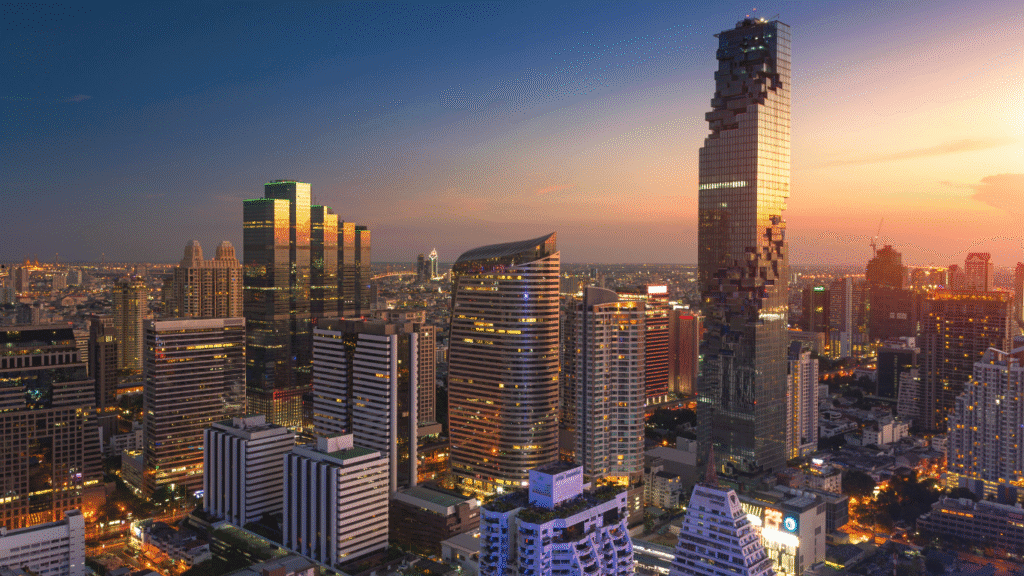
Known for its world-renowned cuisine, spiritual Buddhist heritage, and a hospitality that makes every visitor feel welcome, Thailand is a journey for the senses. You’ll find yourself marveling at gilded temples, haggling in vibrant street markets, and relaxing on pristine shores. To truly unlock the magic of this country, staying connected is key. With an eSIM, you can secure your data connection instantly, allowing you to share your journey in real time, navigate like a local, and access important travel information without the stress of finding a physical SIM card. Before your trip, be sure to visit our product page for a seamless and affordable data solution that will keep you connected from the moment you land.
Best Time to Visit Thailand
The best time to visit Thailand is generally during the cool and dry season, which runs from November to February. During this period, temperatures are more comfortable for sightseeing, and humidity is lower. This is also the peak tourist season, so expect larger crowds and higher prices for flights and accommodation.
- Hot Season (March – May): Temperatures soar, making it the perfect time for sunbathers and beach lovers. While some inland cities can be scorching, the islands offer a refreshing escape.
- Rainy Season (June – October): This period brings short, heavy downpours, but these are often followed by clear, sunny skies. The landscape is lush and green, and tourist crowds are thinner, making it a great time for budget-conscious travelers and those who prefer a more relaxed pace. Some islands, particularly in the Gulf of Thailand (like Koh Samui), tend to be drier during this time.
Navigating Thailand: A Guide to Transportation
Getting around Thailand is an adventure in itself, with a wide range of affordable and efficient transportation options.
- Flights: For long-distance travel between major cities like Bangkok, Chiang Mai, and the islands, domestic flights are the fastest and most convenient option. Low-cost carriers make air travel surprisingly affordable.
- Trains: The State Railway of Thailand offers a network of trains connecting Bangkok to various regions. Overnight sleeper trains are a popular choice, providing a unique cultural experience and saving on a night’s accommodation.
- Buses and Minivans: The bus network is extensive and budget-friendly. Long-distance buses can take you almost anywhere in the country, while minivans are a faster, more direct option for shorter routes.
- Within Cities:
- Tuk-tuks: The iconic three-wheeled auto-rickshaws are a must-try for short distances. Remember to negotiate the fare before you get in!
- Taxis: Metered taxis are common in larger cities like Bangkok. Be sure the driver uses the meter to avoid overpaying.
- Ride-Sharing Apps: Apps like Grab are widely used and offer a convenient, fixed-price alternative to traditional taxis.
- BTS Skytrain & MRT Subway: In Bangkok, these modern, efficient rail systems are the best way to beat the city’s notorious traffic.
Top Attractions and Experiences
Thailand is rich in cultural landmarks and natural wonders. Here are some of the must-see destinations to include in your itinerary.
Bangkok: The City of Angels
Bangkok is a city of captivating contrasts, where ancient temples stand in the shadow of modern skyscrapers.
- The Grand Palace & Wat Phra Kaew: A complex of stunning buildings and the home of the revered Emerald Buddha. This is a spiritual and architectural masterpiece.
- Wat Arun (Temple of Dawn): Located on the banks of the Chao Phraya River, this temple is famous for its intricate, colorful porcelain mosaic and a towering spire that sparkles in the morning light.
- Wat Pho (Temple of the Reclining Buddha): Home to a magnificent 46-meter-long, gold-leaf-covered Reclining Buddha statue. It is also the national headquarters for the teaching of traditional Thai massage.
- Chatuchak Weekend Market: One of the world’s largest outdoor markets, where you can find everything from clothing and antiques to street food and home décor.

Chiang Mai: The Rose of the North
Nestled in the mountains of Northern Thailand, Chiang Mai offers a more relaxed, cultural experience.
- Doi Suthep: A sacred temple perched on a mountain overlooking the city. A long staircase flanked by a Naga snake leads to the beautiful golden pagoda.
- Old City Temples: Explore the walled Old City on foot or by bicycle to discover countless ancient temples, including Wat Chedi Luang and Wat Phra Singh.
- Elephant Sanctuaries: Northern Thailand is home to many ethical elephant sanctuaries where you can observe these gentle giants in their natural habitat. Do your research to ensure you visit a responsible, cruelty-free sanctuary.
- Cooking Classes: Master the art of Thai cuisine with a hands-on cooking class, an experience that will stay with you long after you leave.
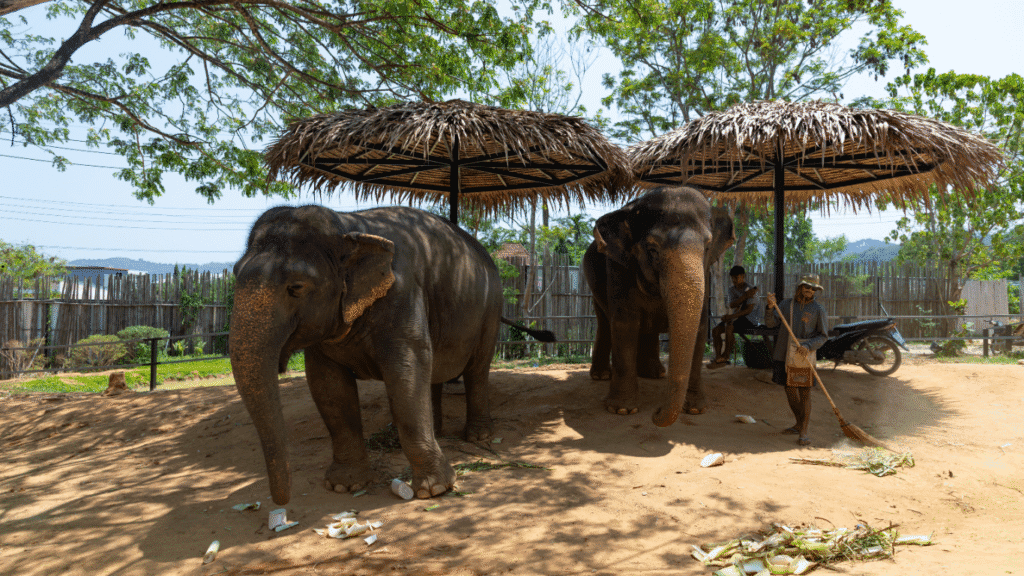
The Southern Islands: Paradise Found
Thailand’s islands offer a diverse range of experiences, from quiet, secluded beaches to lively party scenes.
- Phuket: The largest and most famous island, known for its stunning beaches, vibrant nightlife in Patong, and lush jungle interiors.
- Koh Phi Phi: A breathtaking archipelago with dramatic limestone cliffs and turquoise waters. Visit Maya Bay, famously featured in the movie “The Beach,” and enjoy the lively atmosphere of Koh Phi Phi Don.
- Koh Samui: An island known for its luxury resorts, pristine beaches, and vibrant nightlife. It’s a great choice for those seeking both relaxation and entertainment.
- Koh Tao: A diver’s paradise, offering some of the world’s most affordable and popular PADI diving certifications.
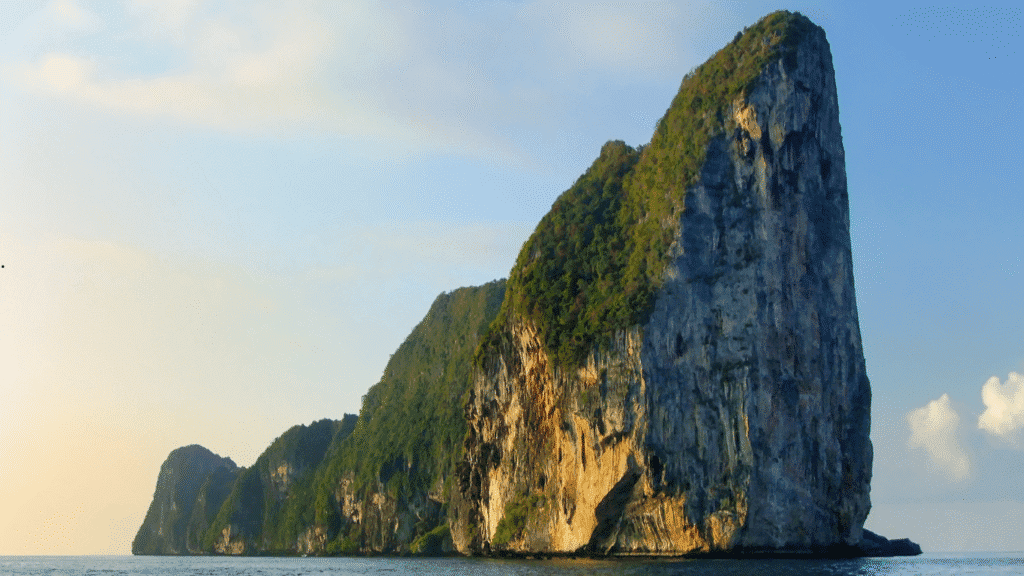
Sample Thailand Itinerary: The Classic Two-Week Trip
This itinerary balances city exploration, cultural immersion, and island relaxation.
Week 1: Bangkok & Northern Culture
- Day 1-3: Bangkok. Arrive at Suvarnabhumi Airport (BKK), get your eSIM set up for immediate connectivity, and take a taxi or train into the city. Spend your first two days exploring the Grand Palace, Wat Pho, and Wat Arun. Take a long-tail boat tour of the canals, and immerse yourself in the chaotic beauty of the street markets at night.
- Day 4: Travel to Chiang Mai. Take a morning flight to Chiang Mai (CNX). Check into your accommodation and spend the afternoon wandering the Old City, visiting temples like Wat Chedi Luang.
- Day 5: Elephants and Cooking. Spend a full day at a reputable elephant sanctuary. In the evening, take a hands-on Thai cooking class and learn to make classic dishes like Pad Thai and Green Curry.
- Day 6: Doi Suthep and Markets. Take a songthaew up to Wat Doi Suthep for a spectacular view and spiritual experience. Spend the evening exploring the famous Chiang Mai Night Bazaar.
Week 2: Island Hopping & Relaxation
- Day 7: Travel South. Fly from Chiang Mai to Phuket (HKT) or Krabi (KBV). Settle into your beachside resort.
- Day 8-10: Island Adventures. From Phuket or Krabi, take day trips to the stunning Phi Phi Islands. Spend your days snorkeling, kayaking through caves, and relaxing on pristine beaches. A must-do is a long-tail boat trip to explore hidden coves.
- Day 11-13: Relaxation or Party. Depending on your preference, spend these days relaxing on a quieter island like Koh Lanta or diving into the party scene on Koh Phi Phi. If you choose a more laid-back vibe, this is a great time to disconnect and simply relax. With a reliable eSIM, you can easily use your phone to search for the best local spots and keep track of your itinerary.
- Day 14: Return Home. Fly back to Bangkok for your connecting flight home.
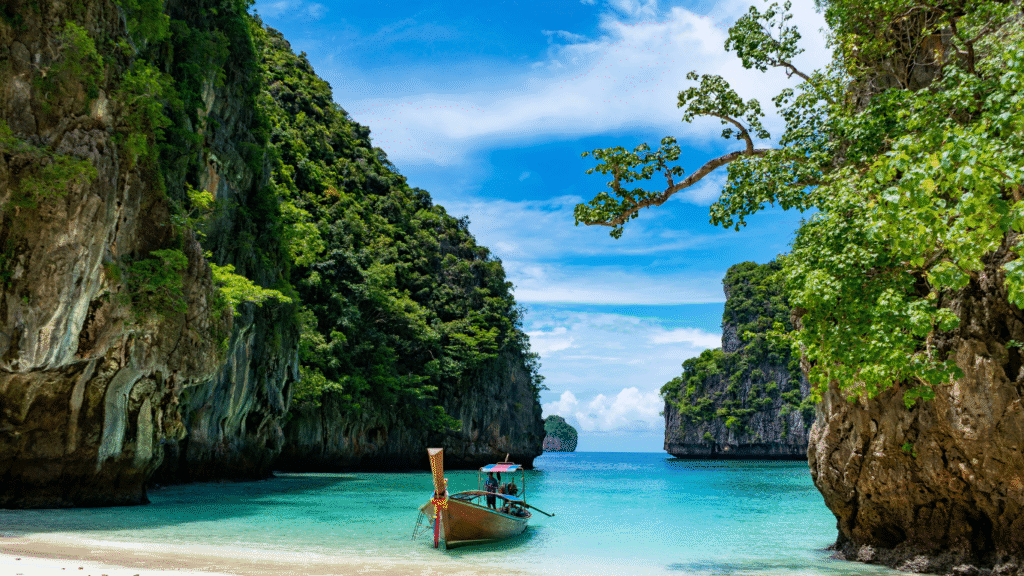
Practical Travel Tips for Your Trip
- Visa: Many nationalities are eligible for a 30-day visa exemption on arrival. Always check the latest visa requirements for your country before traveling.
- Currency: The official currency is the Thai Baht (THB). ATMs are widely available, but it’s a good idea to carry some cash for street food stalls and smaller shops.
- Connectivity: While Wi-Fi is available in most hotels and cafes, a reliable data connection is essential for navigation, translation, and communication. Before your trip, learn how a Thailand eSIM can simplify your connectivity needs.
- Health and Safety: Be mindful of food and water hygiene. Drink only bottled water. Use insect repellent to guard against mosquitoes.
- Cultural Etiquette:
- The Wai: The traditional Thai greeting involves pressing your palms together and bowing your head. It’s a sign of respect.
- Modest Dress: When visiting temples or sacred sites, ensure your shoulders and knees are covered.
- Respect the Monarchy: The King and Royal Family are highly revered. It is illegal to show any disrespect.
- Sacred Head, Unclean Feet: The head is considered the most sacred part of the body, and the feet are the least clean. Never touch a person’s head, and avoid pointing your feet at people or Buddha images.
Thai Cuisine: A Gastronomic Adventure
Thai food is famous worldwide for its balance of sweet, sour, salty, and spicy flavors.
- Street Food: This is where you’ll find the most authentic and affordable food. Look for stalls with long lines of locals—a sure sign of good food. Must-try dishes include Pad Thai, Mango Sticky Rice, Tom Yum Goong (spicy shrimp soup), and Khao Soi (a creamy Northern Thai curry noodle dish).
- Markets: Visit a local market to try fresh tropical fruits you may have never seen before, like rambutan, mangosteen, and durian (if you’re brave enough!).
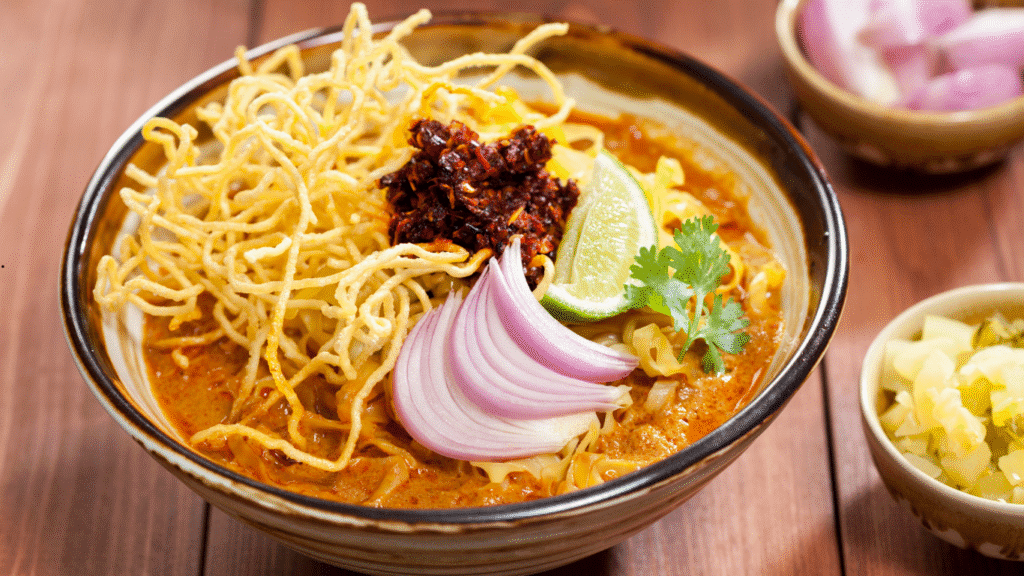
Enjoy your adventure in Thailand! With this guide and a spirit of exploration, you are ready to experience the wonders of this beautiful country.
